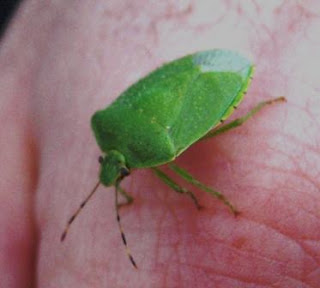When you spot an unknown bird, look carefully at the size of the bird, the colors and patterns on the body and where they are located. Look at the feet - the color and size. But don't grab your field guide just yet. Your book will be there a long time, but the bird will fly off soon so spend time looking at the bird rather than flipping through pages in the book. If you've got a camera handy, snap a couple of shots - they may help.
Once the bird is gone, grab your field guides and start looking. Read the information in the guides - look at the drawings/photographs, read the descriptions, especially information describing behaviors. Look at the range maps, too.
Lately, there have been some birds coming to my window feeders. They're about the size of goldfinches - just a little smaller - and have some yellow splotches. But their chests are very striped. and the beak is small and pointy. They mix with the flocks of goldfinches. They eat similar foods - mainly thistle seed. Their call is a thin, reedy tee-tee.
Use a couple of field guides and try to identify the bird shown above.
Some of my favorite field guides include:
I prefer regional guides to national ones since they focus on birds that are most likely to be found here in Minnesota. (If you want a guide for the larger area, choose one for the Eastern United States rather than the Western U.S. The dividing line is the Mississippi River and since it splits MN in half, you might think either guide would work fine, but the ones for the eastern birds will work better.)
So, who do you think the mystery bird is?
(They are pine siskins, periodic winter visitors to our area. )






